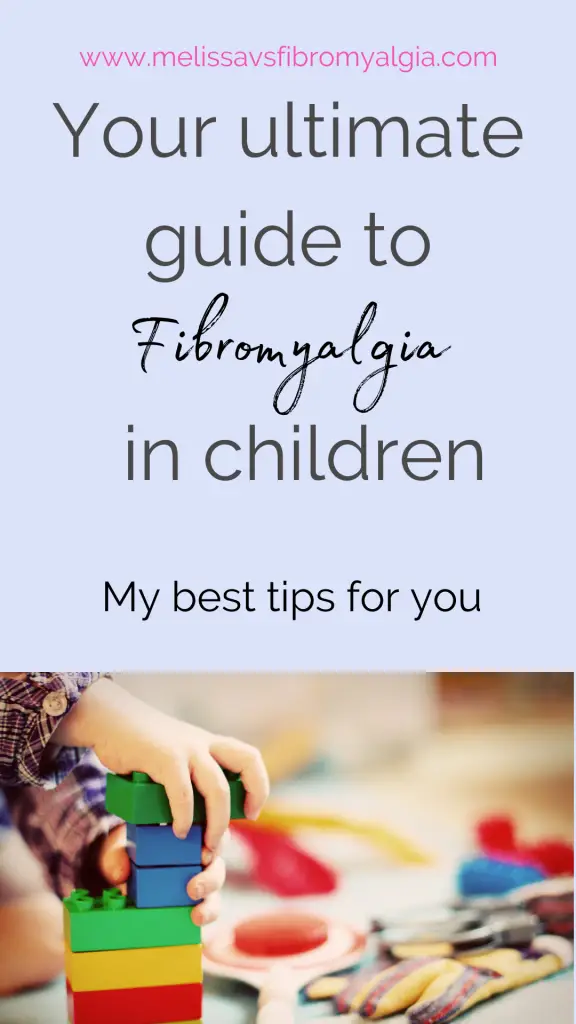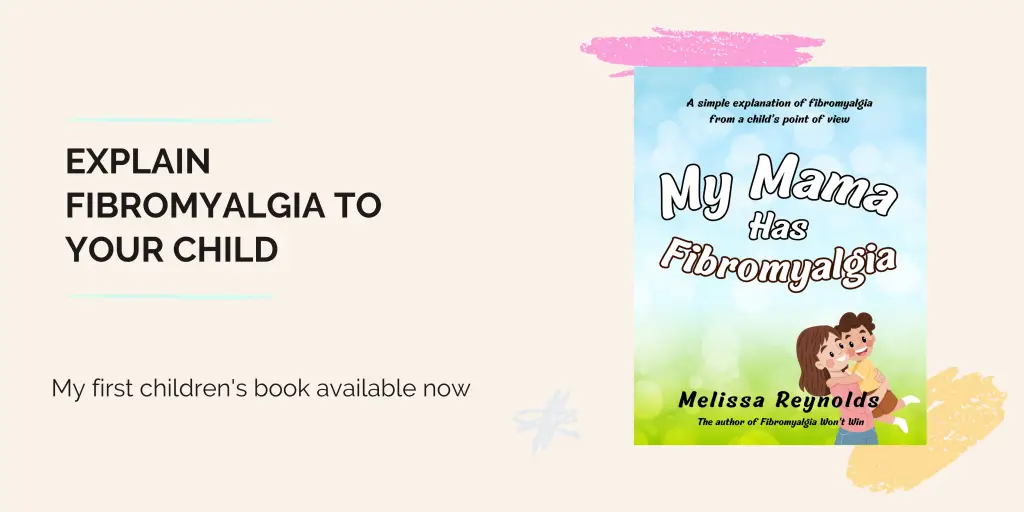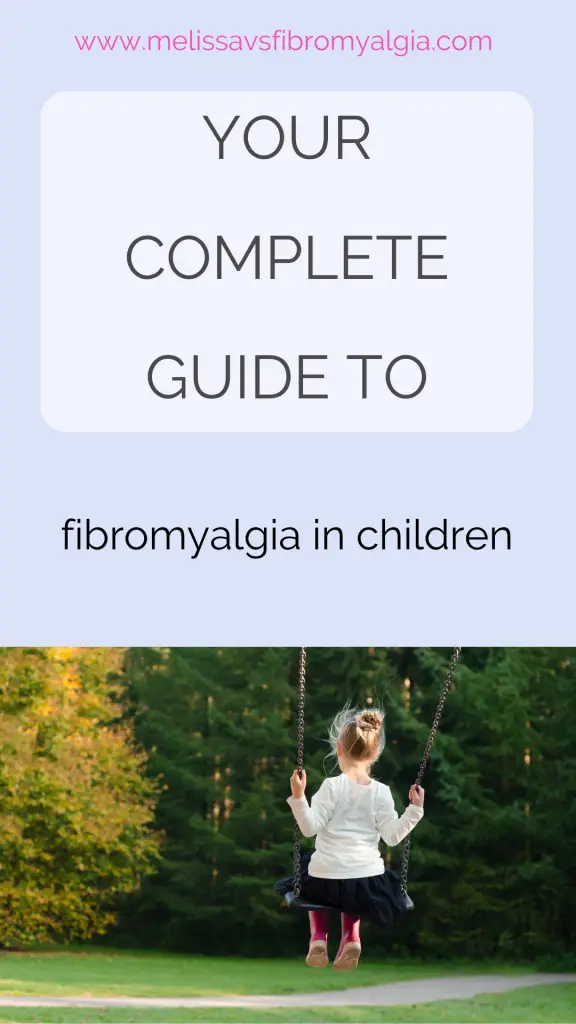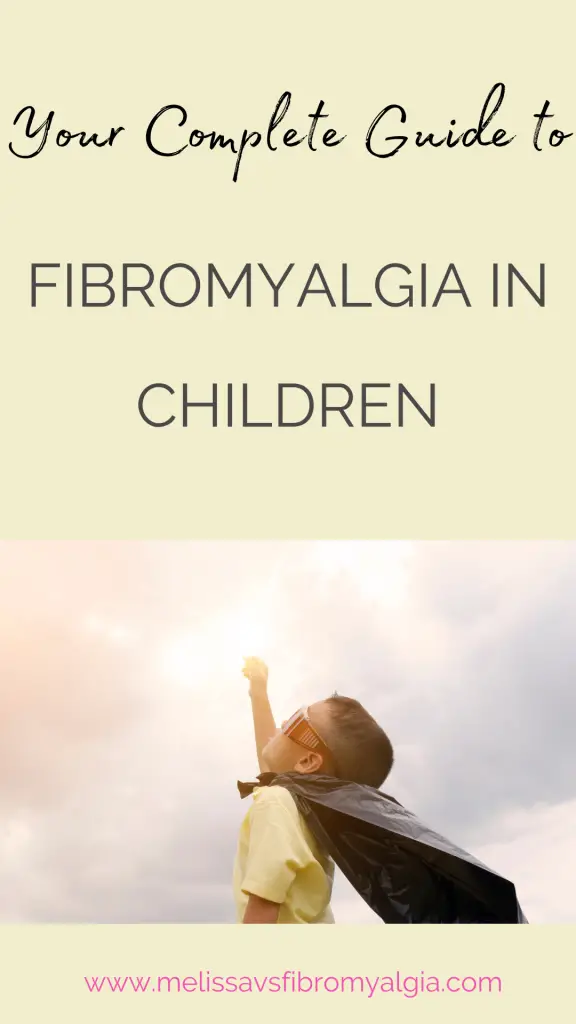Recently someone in a group I’m in asked what else they needed to know for their child that had just been diagnosed with fibromyalgia. They were waiting to see a pediatrician for medications.

It turned out I had a lot to share and I thought it might help some of you.
First I will share some key details regarding diagnosis of children with fibromyalgia and then what I would do if my child were diagnosed with fibromyalgia.
Please note that nothing here is meant to replace medical advice. The author is a patient-advocate not a medical professional. Please use this information as a starting point for your own research.
Affiliate notice: Some of my links may be affiliate links. If you make a purchase using one of these links, I may make a commission at no extra cost to you.
This post is long, if you want a free PDF version, grab it here.
What is Fibromyalgia?
Fibromyalgia is a chronic condition characterised by widespread pain, fatigue and poor sleep. Despite emerging research, we still don’t have a definitive cause or cure.
An article by Boston Children’s Hospital on Fibromyalgia says, “Fibromyalgia usually develops in early adulthood or middle age (20-60), with some studies pointing to a peak around age 35. When fibromyalgia occurs in children, it tends to begin between 11 and 15; it rarely occurs in children younger than 4.”
Most people diagnosed with fibromyalgia are female, but males are also diagnosed with it.
The above article goes on to state that, “Relatives of people with fibromyalgia or similar pain disorders (e.g., myofascial pain syndrome) are at higher risk for fibromyalgia. For instance, one study found that about a third of children whose mothers have fibromyalgia also develop the disorder.” (as above)

Your Role
You are going to be your child’s first advocate. Sometimes you will be their only advocate. You will need to fight for them. This is a big article, and I’ve created a PDF version for you to download and go through at your own time. I have created this based on research and personal experience.
I have experienced pain since I was 14 years old. My teen years were a mess of doctors who thought I was making it up and struggling to be “normal”. It took far too long to receive help or a diagnosis. Many of my symptoms got so far out of control because no-one listened to me.
I don’t want this for other children.
Misdiagnosis and diagnosis
The longer list of symptoms associated with fibromyalgia can also be associated with many other conditions. So the process must be one of exclusion – there is no specific test for fibromyalgia.

Other conditions to consider are:
- Lupus
- Rheumatoid arthritis
- Myofascial pain syndrome
- Chronic fatigue syndrome
- Lyme disease
- Thyroid issues
- Endometriosis
- Hypermobile Ellers-Danlos Syndrome
- and many more
The confusing thing is that they can co-exist or be misdiagnosed as each other.
To diagnose fibromyalgia one will have a history of widespread pain (across all four quadrants of the body, for at least three months), trouble with sleep, fatigue. There should be tests to exclude other conditions. Please note that the article I shared shows old criteria for diagnosis, they no longer test tender point scores as the tender point count can change.
I’d also be involved in the diagnosis process with an eagle eye. Have they ruled out everything? Have they done some x-rays and scans? Has a physiotherapist, podiatrist or chiropractor assessed them (depending on where the pain is). Is there hypermobility? Is there anxiety? (Anxiety can standalone or co-occur).
The previously mentioned article gives some good news regarding fibromyalgia for children, “Although fibromyalgia is a lifelong condition, it tends not to worsen (or “progress”) over time. In fact, it can get better — especially with early diagnosis and aggressive treatment. And children are more likely than adults to respond to treatment: When given appropriate therapy, up to 80 percent of youngsters may see a significant or complete recovery from their symptoms.”
The key here is to get early diagnosis and aggressive treatment. It can be difficult in an adult, when they can tell you everything that’s going on and have some understanding of what’s normal or not. In children it’s much more difficult.
Bring your doctor on board – take note of symptoms and context, and share it all with the doctor. It will all help them to see the big picture.

Normal Lifestyle Factors
If my child was diagnosed with fibromyalgia, the first thing I would do is look at normal lifestyle factors.
Calming the nervous system – there is a good amount of research to say that fibromyalgia is related to an overactive nervous system. Learning to switch on the parasympathetic nervous system will help this. Guided meditation, breathwork, restorative yoga, floating in warm water, humming or singing and other things can help activate this system. You can learn my favourite yoga tools for free and then model them with your child. Check out children’s yoga and meditation on YouTube.
Sleep and rest – Sleep is so important, yet so difficult with fibromyalgia. This is where I would throw the arsenal first. Work on sleep hygiene so that nothing simple is blocking sleep. Learn to get the body into the parasympathetic state. And consider medication as needed. Probably not traditional sleep meds, but there are several medications that are given for fibromyalgia sleep problems where the sleep support is a side effect of it’s original intention. Learning to rest and balance activity with rest is key. Using the energy they have wisely will help them to create more. Learn to pace.
Gentle movement – gentle movement is so important for all bodies. Find the kind of movement that suits their physical ability and encourage it. Try to find the level where they are comfortable (say a 10 minute walk) and as long as that doesn’t increase symptoms, consider making it an 11 minute walk. The point is quality of life – not a preset level of exercise.
Physical therapies – I think it’s worth seeing physical therapists for their input. Physiotherapist, osteopath, chiropractor, podiatrist (if legs/feet are involved). You don’t have to pursue their treatment option, but get their advice. For years I was treated as if my lower back pain was part of the fibromyalgia and it was actually a sacroiliac joint partially dislocating. A chiropractor helped me to put it back into place. Some physical therapists have several modalities in their arsenal, so that is a good place to start. For example some physiotherapists can do gentle manipulation, massage, ultrasound, intramuscular needling and more.
A pain management plan is crucial. Although most things we do to manage pain are more like Band-Aids. I believe ensuring we are addressing perpetuating factors (other conditions, sub optimal lifestyle choices, biochemical imbalances), calming the nervous system, getting good quality sleep and addressing healthy lifestyle choices we have the ability to work at the root cause of fibromyalgia. Learn more about my If This Then That Pain Management Plan that changed the game for me.
In the meantime, we need to manage pain. This is usually where the medication talk comes in. However, when we look at the above things I mentioned, we are hopefully turning down the volume of the pain.
When discussing medications, I would ask for the potential risks and the expected benefits. I would be asking about low dose Naltrexone before any medications that have known history of messing with brain cells. If the cost versus benefit ratio works out, of course, I’d take the medications (for me and them) but I think it’s wise to make an informed decision.
Ask the prescriber or the pharmacist what the most effective way to take the medications prescribed is. For example it’s much better to take medication before the pain has gotten too high. Once the pain is at a high level, then the nervous system has got amped up and it’s much harder to calm it all down.
Please don’t find this overwhelming – you can download the free PDF of this post here so that you can work through it in your own time and refer back to it.
Further ideas for your pain management plans:
- Heating pad
- Ice packs
- Warm baths
- Gentle stretching
- Myofascial release/massage
- Physical modalities as discussed above (ie. physiotherapist)
- Relaxation techniques as discussed above
- Topical creams, especially in conjunction with massage
Education
The last thing to consider is how we discuss the condition with our child. I believe it’s best to have a hope-focused and positive way of discussing it. Let them know they can still achieve everything they want to. They may have to break it down differently, but they can go to university and get into their chosen career (most of the time).
Part of the reason that you want to be very involved in the diagnostic process is so that you and your child can know it is “just” fibromyalgia. There is no permanent damage or other insidious process happening. You and your child will feel much calmer knowing the key details of the condition.
A final consideration is yourself. This is a big deal. You are now project manager of your child’s health, until they are old enough to take over the reigns. There’s a lot of work to do, I am sorry. But I hope this article has helped. You must also look after yourself. All of the lifestyle recommendations above? Do them for you too. Model self-care – this free workbook can help.
More research and information is coming out all the time. I believe we will see a way to put most of us into remission in my lifetime. Certainly in your child’s.

